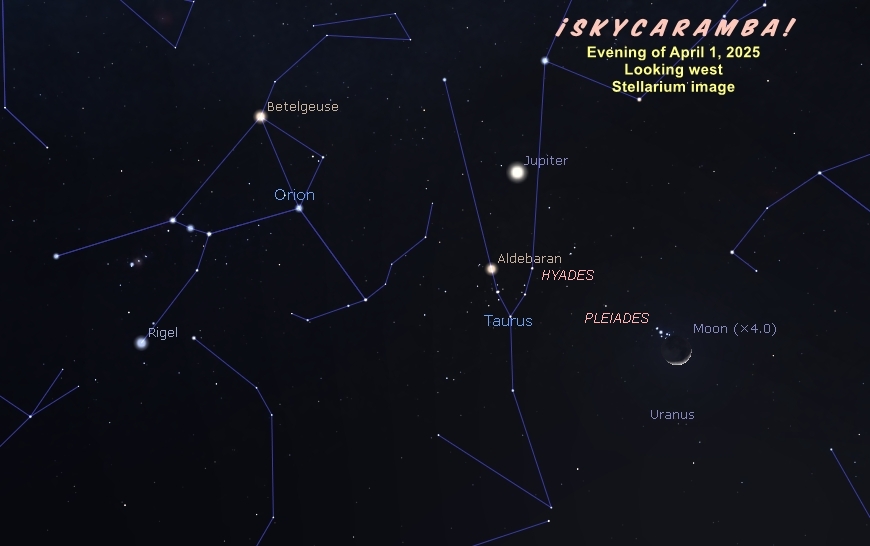
A crescent moon is in our evening sky as April starts. You’ll see it to the west after sunset, below the Pleiades and the Hyades. With binoculars, you may find Uranus in that area too. Jupiter is above the Hyades V asterism. And Mars is on the east side of Gemini, near the star Kappa Geminorum. The planet and constellation are a little west of the meridian. During the month, Jupiter will continue eastward out of Taurus. Mars will make it almost all the way to the Beehive cluster in Cancer.
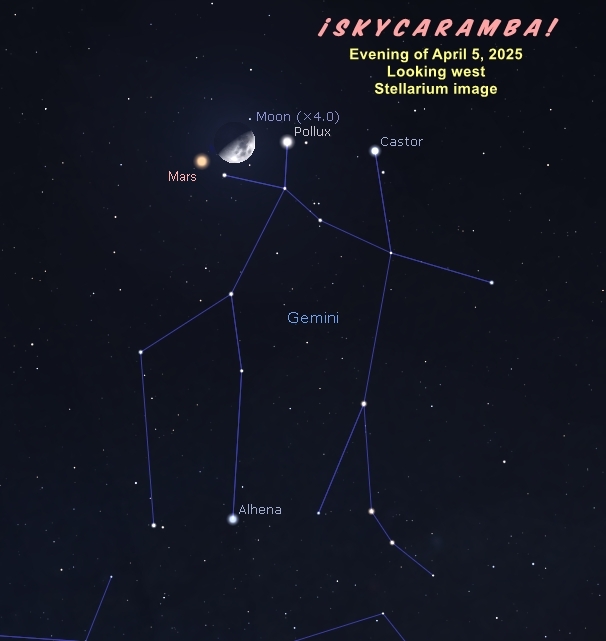
In the morning sky, April starts with Venus, Saturn, and Mercury in a dance. Venus will be easiest to spot, as always. And actually, Saturn and Mercury will be a challenge for northern hemisphere observers where they’re rising at an angle not conducive to getting them above the horizon before the dawn’s glow obscures them.
At first, Mercury and Venus are on parallel tracks, drawing closer to Saturn. Mercury resumes direct (eastward) motion on the 6th. It begins to steer away from Venus but continues moving toward Saturn until it’s 2.0° from the ringed planet on the 10th. After that, Mercury drops as Venus resumes direction motion and continues moving closer to Saturn. Saturn and Venus get as close as 3.7° on the 28th. Just after the middle of the month, you’ll see that Venus appears to be curving after Mercury. But the messenger planet is heading sunward. It reaches greatest elongation on the 21st at 27.4° west of the sun.
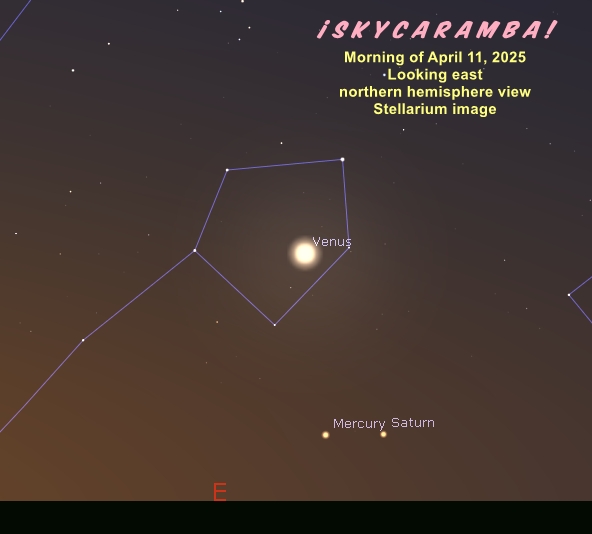
Although Venus and Mercury are both in direct motion as April ends, only Mercury is heading out of the morning sky. Venus will stay there for several months and actually continue growing in angular separation from the sun until June. That’s because while Venus is moving eastward among the starry background, the sun is moving eastward faster. Mercury, however, is moving eastward faster than the sun.
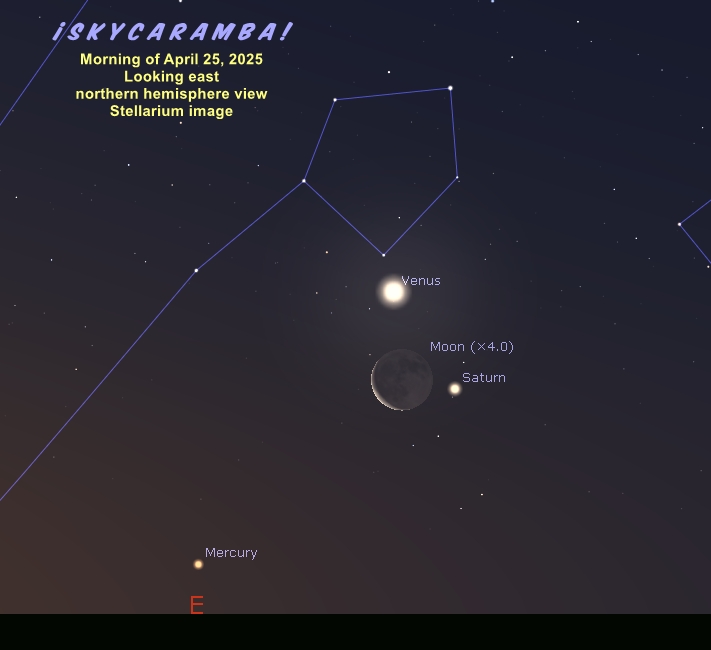
All three of our morning trio remain visible to most southern hemisphere observers before dawn all month. In the northern hemisphere, the best chance to see all three is around the middle of the month. They’ll remain very close to the horizon. But if you can spot Venus, look below for Mercury and Saturn. Binoculars will help. And an unosbtructed horizon is a must. If you can get to some flat open countryside, you’ll have a good chance.
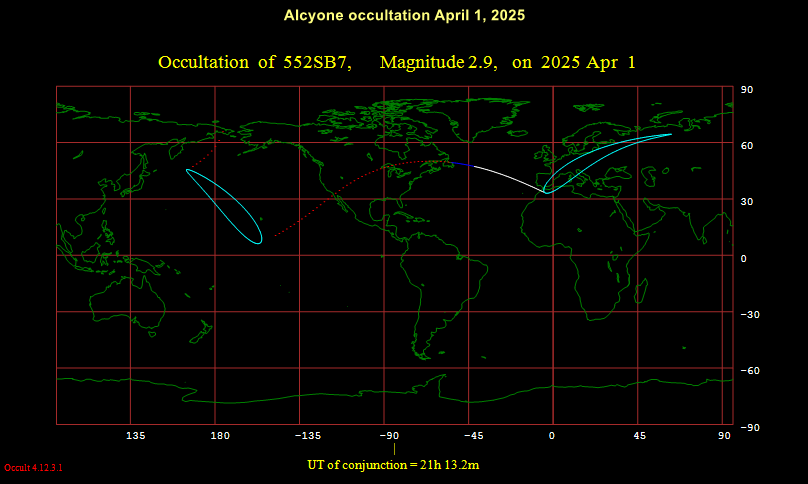
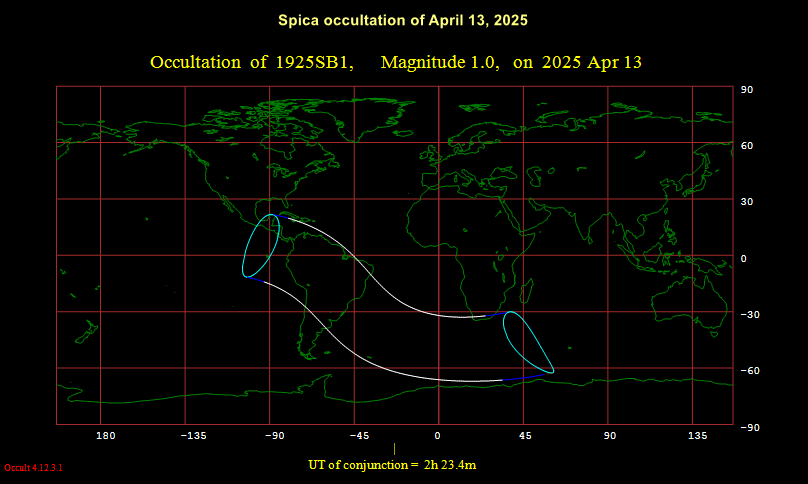
European observers can watch the moon pass in front of the Pleiades on the evening of the 1st. A thicker crescent is near Jupiter on the 2nd. A first quarter moon is near Mars and the bright star Pollux on the 5th. The moon’s near Regulus on the 8th. And the moon’s full when it passes and occults Spica on the 13th. Most of South America and the far southern Atlantic get an occultation. A waning gibbous moon is near Antares on the late evening of the 16th to morning of the 17th. The reddish star will be occulted for observers in southern Africa and ocean areas near it to the southern Indian Ocean and Southern Ocean. A waning crescent visits our morning meeting of planets on the 25th and 26th. It’ll be near Saturn and Venus one morning and Mercury the next. After new moon on the 27th, you’ll see a waxing crescent near Jupiter on the evening of the 30th. If you’re in the Atlantic Ocean region from the Brazil Basin to the Sierra Leone Basin, you can see the star Elnath occulted that evening.
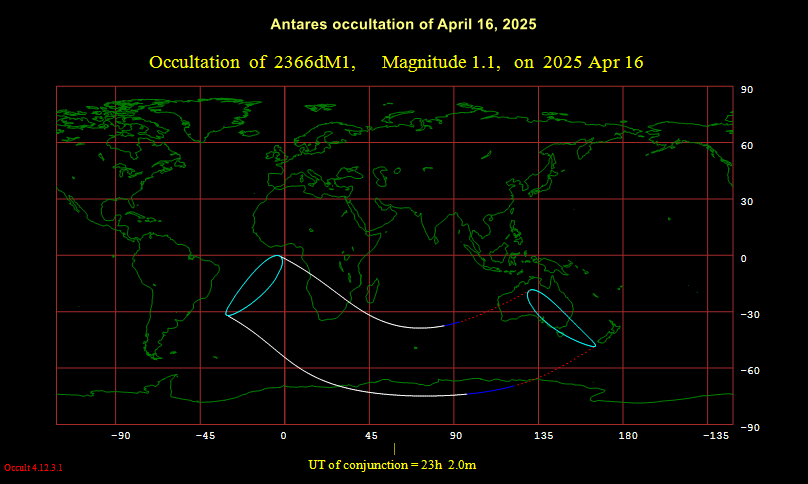
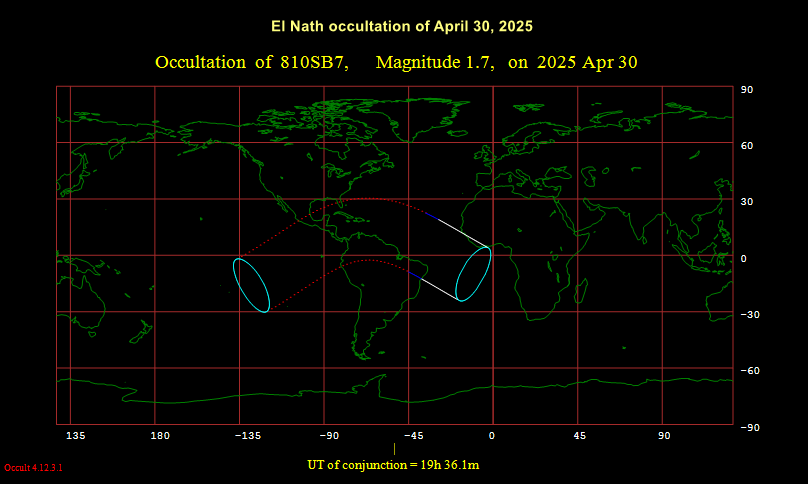
This month’s full moon is far away, happening at apogee. The center-to-center distance from Earth to Luna will be 406,300 kilometers. Perigee will be on the same day as the new moon at a distance of 357,100 kilometers.
Northern lunistice is 28.7° from the equator on the 3rd. The moon goes south of the equator on the 11th. Southern lunistice is 28.6° from the equator on the 18th. The moon goes north of the equator again on the 25th. The figures presented here should make it clear that the extremely high lunar declinations are getting smaller now. Enjoy seeing the moon as far north and south as it can go. Your next chance is in about 18 years.
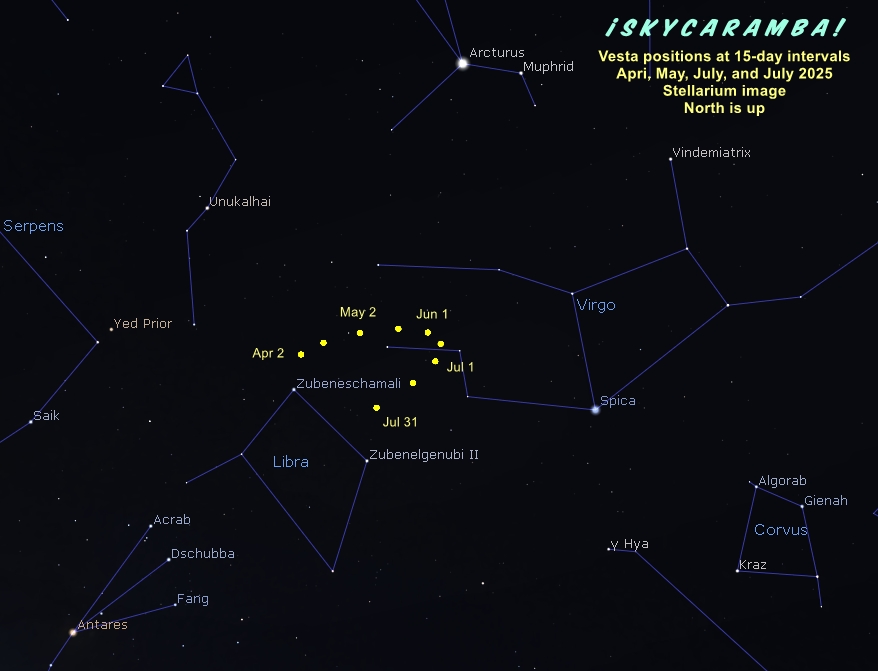
Vesta is the fourth object discovered in the asteroid belt between Mars and Jupiter. And it will be at opposition on May 2nd. This month and next are good times to observe it. You can find it with binoculars a little north of Libra and east of Virgo, moving toward Virgo’s feet. At its brightest, Vesta is about magnitude 5.2, within naked eye visibility. So try to see it that way too, if you have a dark enough sky and good enough eyes.
Look for Lyrid meteors to peak around the 22nd. The shower is mainly visible after midnight from the northern hemisphere.

